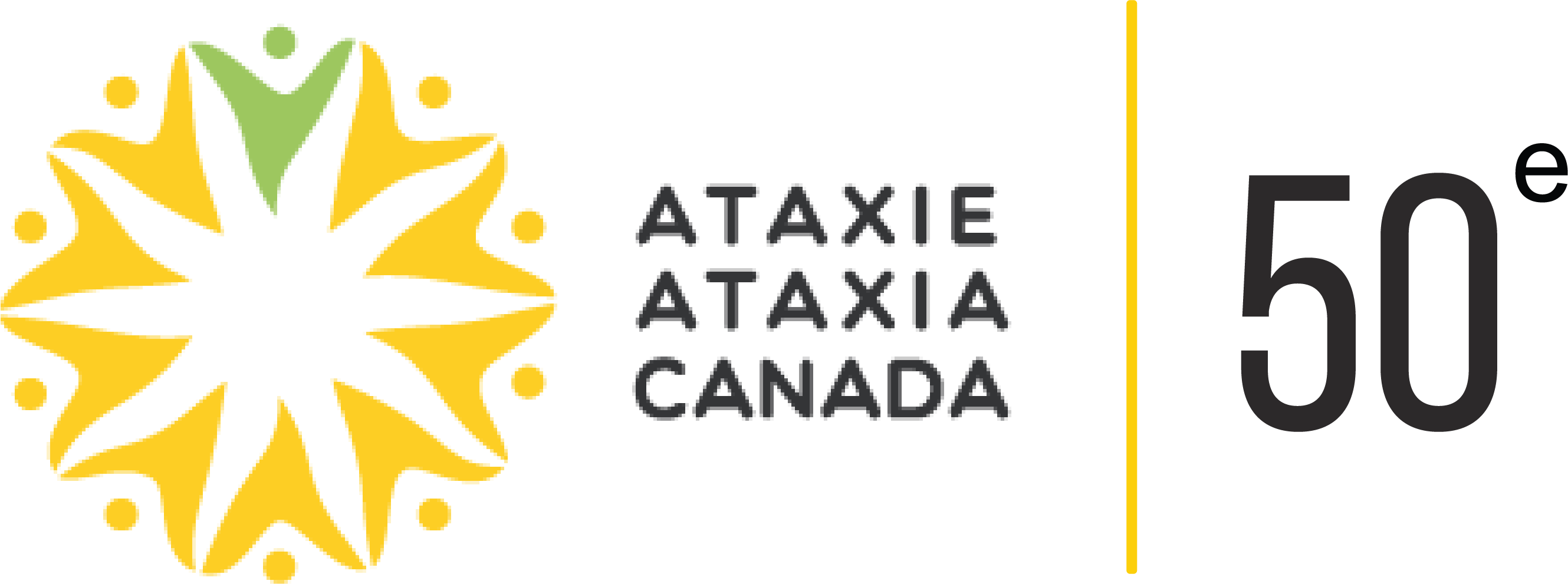Thanks to yous upport and our partnership with Muscular Dystrophy Canada, we have funded two projects focused on Friedreich Ataxia (FA) this year ! We are thrilled to support clinical and translational research projects that focus on managing symptoms, healthcare assessments, understanding diagnosis and disease progression, enhancing care, discovering new treatments and therapies, and moving research towards the development of cures.
While the competition supports research across a range of neuromuscular disorders, we are particularly proud to co-fund two projects out of the nine on Friedreich Ataxia (FA) – made possible through a dedicated joint sub-call in partnership with Muscular Dystrophy Canada.
These projects are crucial for advancing the Canadian neuromuscular community. They help expand research infrastructure, fund a wide range of neuromuscular disorders, address funding gaps, and improve the lives of those affected by these conditions.
Neuromuscular research grants are made possible each year thanks to the generosity of our supporters, who work tirelessly for our community. Ataxia Canada is committed to working alongside our donors and partners to keep neuromuscular research moving forward—especially in rare conditions like FA, where joint funding leverages shared resources and significantly amplifies impact. By funding ground-breaking research for all neuromuscular disorders, we can continue to leverage the momentum and progress that has been made to date, and fuel future discoveries
“We have been funding research into FA for more than 50 years and are dedicated to continuing this important work. We are happy to collaborate with foundations whose mission overlaps with our own.” said Francois-Olivier Theberge, general manager , Ataxia Canada.
The projects submitted this year for consideration were of remarkable quality, and we thank each and every team for their commitment in doing this important work. Together, we’re shaping a future where every Canadian diagnosed with a neuromuscular disorder can access the care and research they need. From the entire neuromuscular community, congratulations to all recipients!

Cynthia Gagnon, University of Sherbrooke: Occupational Therapy, Centre Director, Faculty of Medicine and Health Sciences, FMSS School of Rehabilitation
Project title: Selection of patient-reported outcomes to improve dysphagia assessment in myotonic dystrophy type 1 and Friedreich’s ataxia.
Project description: Some rare diseases, such as myotonic dystrophy type 1 and Friedreich’s ataxia, weaken the muscles. This can make simple gestures such as swallowing food or drinking difficult. The problem is called dysphagia.
To better understand how these people experience dysphagia, researchers use questionnaires. But current tools are not well adapted to the reality of those affected: we don’t always fully understand how they feel.
This study aims to change that. It seeks to answer important questions:
What are the real symptoms of dysphagia in these patients?
How does it affect their daily lives?
Can they assess their own difficulties?
To answer these questions, the researchers will be working with patients, their families and specialists in the field. The aim is to create a better, more accurate and more useful questionnaire. Thanks to this project, we hope to improve care and better evaluate treatments for these diseases.

Dr. Toshifumi Yokota: Professor of Medical Genetics at the University of Alberta
Project title: Selection of patient-reported outcomes to improve dysphagia assessment in myotonic dystrophy type 1 and Friedreich’s ataxia.
Project description:Development of an improved antisense therapy using lipid nanoparticles for Friedreich’s ataxia and bulbospinal muscular atrophy.
Certain rare diseases, such as bulbar spinal muscular atrophy (SBMA) and Friedreich’s ataxia (FA), progressively weaken muscles. These diseases particularly affect certain communities: SBMA is more common among aboriginal peoples in Western Canada, and FA is more common in certain French-speaking regions of Quebec.
Today, available treatments have difficulty reaching the affected muscle and nerve cells. This research project is testing a new approach that could change all that.
- Innovative technology: combining two powerful tools
ASOs (antisense oligonucleotides): these are small molecules that target the genes responsible for the disease to reduce their activity. - Lipid particles (LNPs): these act as vehicles for transporting ASOs to diseased cells.
By combining these two elements, researchers hope that the treatment will better reach muscles and nerves, while remaining safe.

